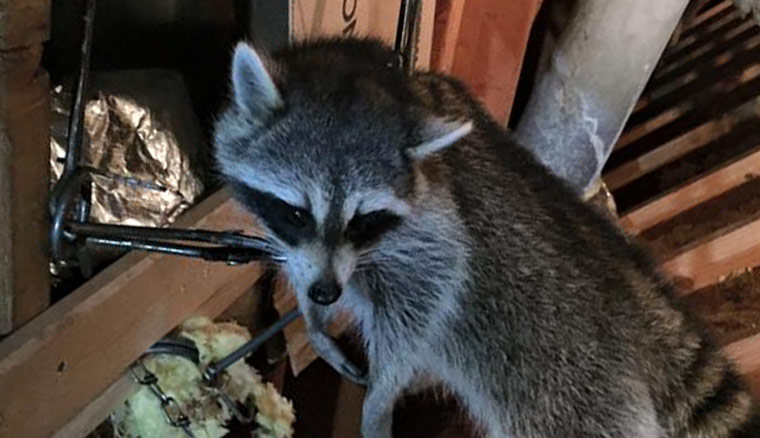-
info@aaanimalcontrol.com
Call us for help in your town
Humane Wildlife Education
What is a Conibear trap?
Need wildlife removal in your hometown? We service over 500 USA locations! Click here to hire us in your town and check prices - updated for year 2020.
The Conibear trap is also commonly referred to as the body grip trap (or bodygrip trap), and just as the name would suggest, it is designed to trap an animal via a trap that contains it around the body. When creatures run through the trap, they work in very much the same way as a rat or mouse trap, but for a much larger animal. The kill is very quick, and the result is usually less messy and more humane than many other types of trap.

The trap is named Conibear after the man who made it - Frank Conibear. It was in the early 1950’s that he first created the device, and it was during the later end of the decade that it started to become available on shelves around the USA. Many trappers now say that the Conibear trap is the best trap to use in a trap-kill scenario. It certainly does the job very quickly, and usually very efficiently too.
How does the Conibear trap work?
The design is simple - there are two hollow metal squares that move in the same way that a pair of scissors do, springs on the end(s). Used with bait or without (although it works much better with in most situations), when the trigger is set by the animal running over it, the two metal squares scissor together, essentially trapping the creature right through the centre. The trigger can be released either by the animal running through the trap, as well as by eating the bait that is attacked to the trap.
What animals does the Conibear trap work on?
There are different sizes of Conibear trap available now - 5 by 5 inches, 7 by 7 inches, or 10 by 10 inches. Obviously the bigger traps are for bigger animals. The 10 by 10 inch ones, for example, would be the right size for an animal such as the otter or beaver. The next one down - 7 by 7 inches - is good for opossums, raccoons and other similarly sized critters. The smallest one - 5 by 5 inches - is suitable for animals the same size as muskrats and minks.
Things to remember when using Conibear traps
You will need to read the legalities in your state surrounding Conibear traps. In some states, you are only permitted to use these traps in water-based environments. This is even more so the case with the slightly larger traps. This means that it would be illegal to use these traps on land, and you could be prosecuted for doing so. We would always recommend getting some professional advice before making any efforts to use any kind of trap on your land.
Problems with Conibear traps
As with any other type of wild animal trap, Conibear traps come with their fair share of disadvantages. They may not work correctly, and they may capture the wrong kind of animal, particularly if the traps are used on the land. In fact, that’s why you are not permitted in most states to use this kind of trap. You will put other animals, including household pets, at risk.
There could be times where these traps do not work as expected, resulting in an animal being trapped and seriously injured, rather than dead. You will then need to deal with that particular situation, trying to find the most humane way to “finish the job”. You will also need to remember that the traps need to be checked regularly, not only to ensure they are still correctly set, but also to remove any dead or injured animals. You may even need to rebait the trap from time to time, or move it around to ensure you get the best placement.
There are a lot of things to take into consideration when using traps such as Conibear traps, including the law. Make sure you know what you’re doing before you take any action.
For more information, you may want to click on one of these guides that I wrote:
How To Guide: Who should I hire? - What questions to ask, to look for, who NOT to hire.
How To Guide: do it yourself! - Advice on saving money by doing wildlife removal yourself.
Guide: How much does wildlife removal cost? - Analysis of wildlife control prices.
animals in the attic
noises in the attic


















